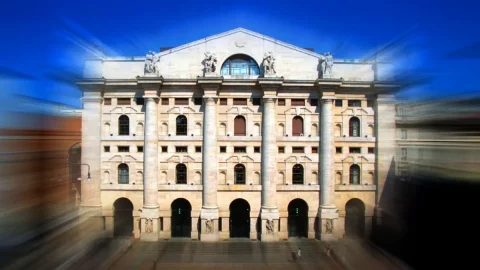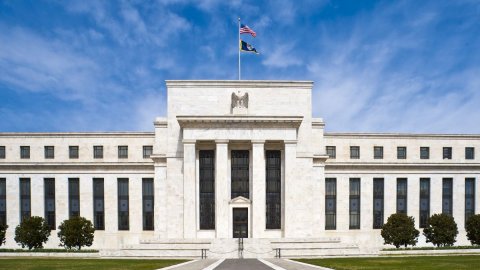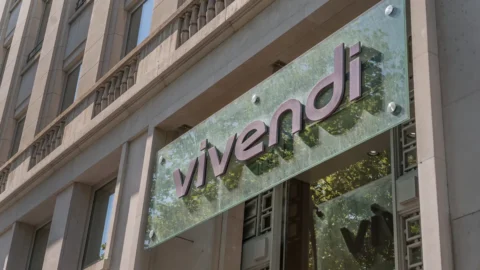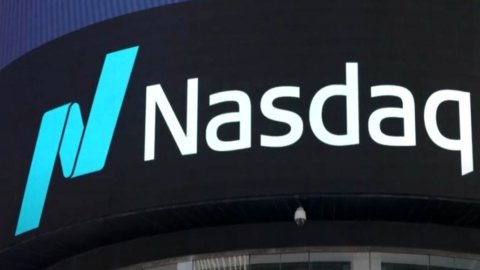There were: two big unknowns when we wrote, a month ago, the texts of Hands. On the one hand, the elections American, on the other i contagions from Covid-19, who had already started a second run.
The first unknown has been resolved: Joe Biden he won, and one day even Trump will have to come to terms with it.
The second unknown has also been dissolved, but, unlike the first, not in a positive sense: thewave of infections continues, and, unlike last month, most strongly in America compared to Europe.
Sui rates, the impact of both has been tenuous, at least so far T Bond e Waist. The latter remained stable, always below zero, while the yields of the former signaled a feeble desire to ski, trying to reach – unsuccessfully – the 1%, but finishing anyway a handful of basis points above last month's levels. To put things into perspective, let's recall that a year ago, in the happy times when we knew nothing of the impending virus, the 10-year T-Bond returned 1,8%, and a year before that, 2,8%. .
What's behind these ascent tests? On one side inflation: it is true that to look for some pressure on prices in America one has to resort to a microscope, but it is also true that, compared to the beginning of the summer, inflation – headline e core – it is somewhat higher in America compared to the Eurozone, and this applies to both i consumer prices that for producer prices. On the other hand, the real economy holds, despite the virus, ei long rates they also reflect this estate.
We have said that the impact on interest rates, after the resolution of the two unknowns, was slight for T-Bonds and Bunds. But it wasn't dim for i btp: Yields continued to grind historic lows, even touching 0,60%, and finishing in mid-November just above that level.
It's not just Italian securities that have recorded sharp drops in yields: the same happened, to remain in the Mediterranean Club, with historic lows for Greece, 0,77%, Spain, 0,12%, and Portugal, 0,09%. Speaking of Portugal, when, during the sovereign debt crisis, the countries affected were spoken of as a Mediterranean Club, the Portuguese finance minister protested lively, arguing, not without reason, that they have nothing to do with the Mediterranean; but it is always better to be associated with the Mare Nostrum, than to pigs, PIGS having been the first acronym that united the countries in that crisis.
Why i yields of "peripheral" countries have fallen while those gods Waist have remained stable, if not slightly climbed? Good question. Perhaps the markets are starting to realize that, with an ECB underwriting the titles of the educated and the educated, we are all in the same boat, we will all be saved, without distinction, as the Italian Constitution states, of sex, race, language and religion; so there is no reason to keep the famous spreads too high: Germany will be the master of all virtues, but the other countries become worthy followers, once they can draw on the well of St. Patrick of the European Central Bank.
And i real rates? Those deflated by core CPI (which excludes food and energy) remained approximately stable. A little higher for rates on US government bonds (in line with nominal rates), while for BTPs the decline in nominal bonds was negated, at a real level, by the fall in the inflation rate. For really help the economy should be, in America and everywhere, much lower, but we have to settle…
Also on the exchange of dollar the resolution of the two unknowns above did not have much effect. The level of 1,18 against the euro has not deviated from the range of recent months. The dollar, as reiterated last month, weakened by about 5% compared to the beginning of the year. Looking to the future, and taking the north starcomparative performance of the real economy on both sides of the Atlantic, the dollar should strengthen. Unless a new, more severe lockdown arrives there too, which is very likely.
The other major determinant, the long-term real rate differential, which was substantially in favor of US stocks and has now settled to zero, should now remain neutral. But, as we wearily repeat by now, it all depends on the virus and the vaccine: two variables for which one can only say wait and see.
On the subject of exchange rates, the performance of the chinese coin: the yuan continued its run. Against the dollar, compared to a year ago, it appreciated by 6%. There the pandemic has done the yuan good, as befits a nation that has paid for the original sin of having originated SARS-CoV-2, but managed to get out of it earlier and better than the others. It is also worth remembering that, compared to the level before the Great Recession (mid 2007) and to this day, lo yuan has suffered a appreciation, in terms of real effective exchange rate, more than 40%.
And i financial markets? The answer of Bags to Biden's victory it was between composed and positive. Trump had stated that if he won, stock markets would rise like a rocket, and the obvious implication was that if the opponent won, these markets would collapse. That didn't happen, e quotations have risen.
There will be others ups and downs, but by now they will be in direct contact with the vicissitudes of the virus, which in recent days marks record after record of new infections in America. And, of course, there's the God Card vaccines, which, every time it is put on the table, causes surges in shares (positive announcements) or sudden retreats (suspensions, delays…).
How should the price of the yellow metal in the US elections? Gold fell, signaling that there are fewer woes to come: like a good 'canary in the mine', gold becomes a haven when things go badly. Or at least that was the case until recently, when instead stock market and gold prices kept going up. But now the "odd couple" Bags-gold no longer dance cheek-to-cheek like before.
If you look at the graph above, from August to now thegold è down and Bags (represented by the S&P500) are go up. As indeed it should be. It will be interesting to see if this physiological inverse relationship will last, if the spread of the virus should once again derail the economy…





